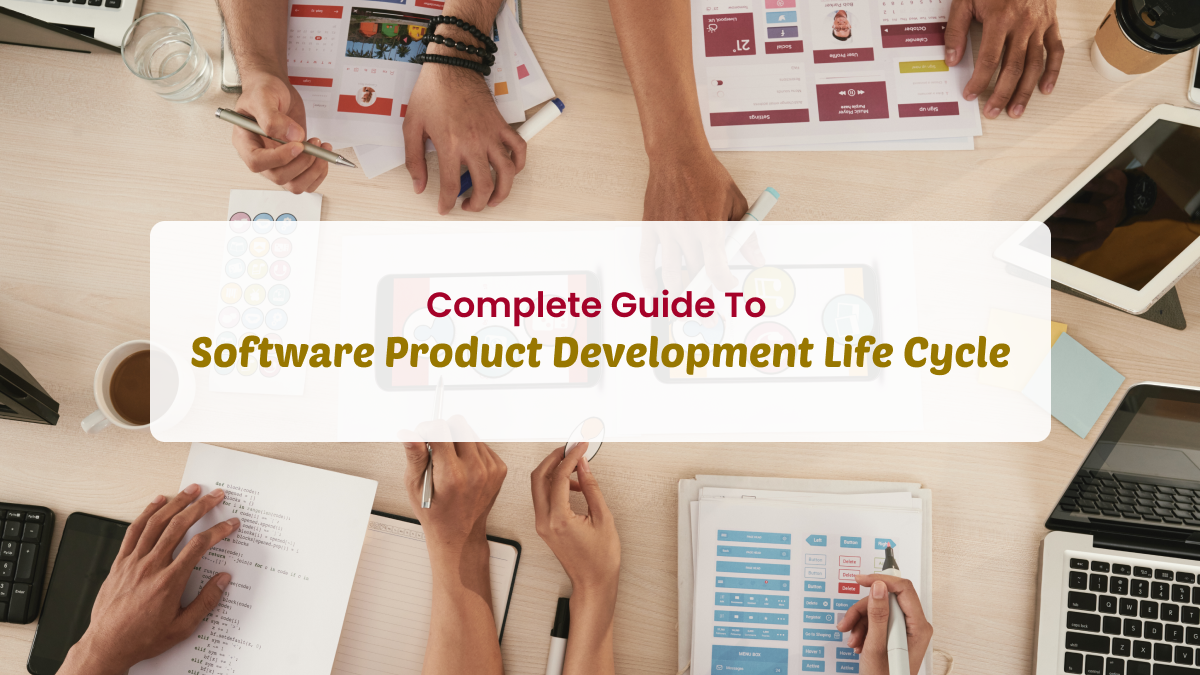
The software product development life cycle is a process that all software companies go through to create and release new software products. The aforementioned procedure can be dissected into six distinct stages, namely planning, analysis, design, development, testing and integration, and maintenance. In the present blog entry, we shall expound upon each of the aforementioned phases with meticulous attention to detail and furnish valuable recommendations on how to effectively traverse through them. If you are contemplating the development of a novel software product, then this blog post is intended for your perusal.
What is a Software Development Life Cycle (SDLC)?
The Software Development Life Cycle (SDLC) is the process that software companies use to create and release their products. It involves five distinct phases: planning, analysis, design, development, testing and integration, and maintenance.
Planning: The first phase of the Software Product Development Life Cycle is planning. This involves setting goals for the new product and evaluating its feasibility from a technical standpoint. Once the project scope has been finalized, then it’s time to move on to the next phase.
Life Cycle Of Software Development
Planning is the first phase of the Software Product Development Life Cycle. During this phase, companies come up with ideas for new software products and brainstorm how they can be developed into marketable products. Companies should consider the target customers, competition, technology trends, and industry needs when coming up with ideas during this stage.
Analysis: During this phase of the Software Product Development Life Cycle, you will analyze your customer needs to build a product that meets those needs. You will also assess any potential risks associated with developing such a product before proceeding.
Design: This is the third phase of the Software Product Development Life Cycle. During this phase, companies develop a design for their software product that meets customer needs and satisfies market demands. Companies should consider user experience (UX) design principles, usability testing methods, and other important aspects of designing software products during this step.
Development: It is the fourth phase of the software product development life cycle. This is where the actual coding takes place to create the software product. Software developers must be familiar with various programming languages and technologies to complete this stage. It’s also important for companies to make sure they are utilizing secure development practices to protect their customers’ data from hackers or malicious actors.

Software Development Life Cycle
Testing and Integration: Once development is complete, it’s time for testing and integration. This includes running unit tests as well as system-level tests to ensure that your Software Product functions correctly. During this stage, companies make their software product available to customers through a download, purchase, or subscription service. Companies should consider marketing strategies such as search engine optimization (SEO), content marketing, and social media engagement to promote their product and reach more potential users.
Maintenance: The last phase of the software product development life cycle is maintenance. This involves providing bug fixes and making improvements to the Software Product over time to keep it up-to-date and functioning as intended.
Navigating the software product development life cycle can be challenging but it’s an essential process for all software companies. Taking the time to understand each of the six phases and how they relate to each other will help you create successful software products. By following these tips, you can make sure that your software product is marketable and successful.
Conclusion:
All software products go through a cycle during their development. The aforementioned process is commonly referred to as the software development life cycle (SDLC). The SDLC helps developers create high-quality products by breaking down the process into manageable steps. There are six stages in the SDLC: planning, analysis, design, testing, implementation, and maintenance. Each stage has its own set of activities that need to be completed before moving on to the next stage. If you want help creating a product or improving an existing one, our team of experts can guide you through each stage of the SDLC. Contact us today to get started.
